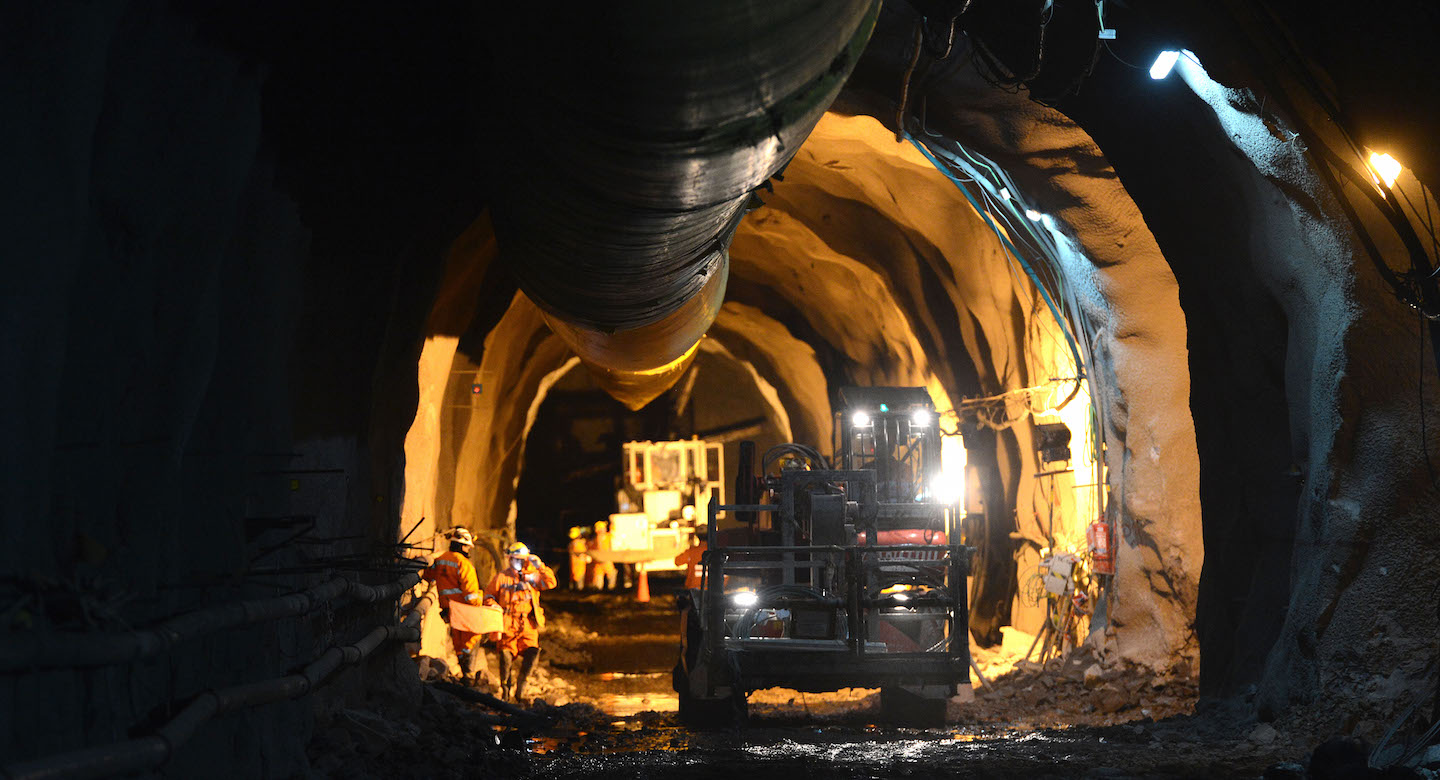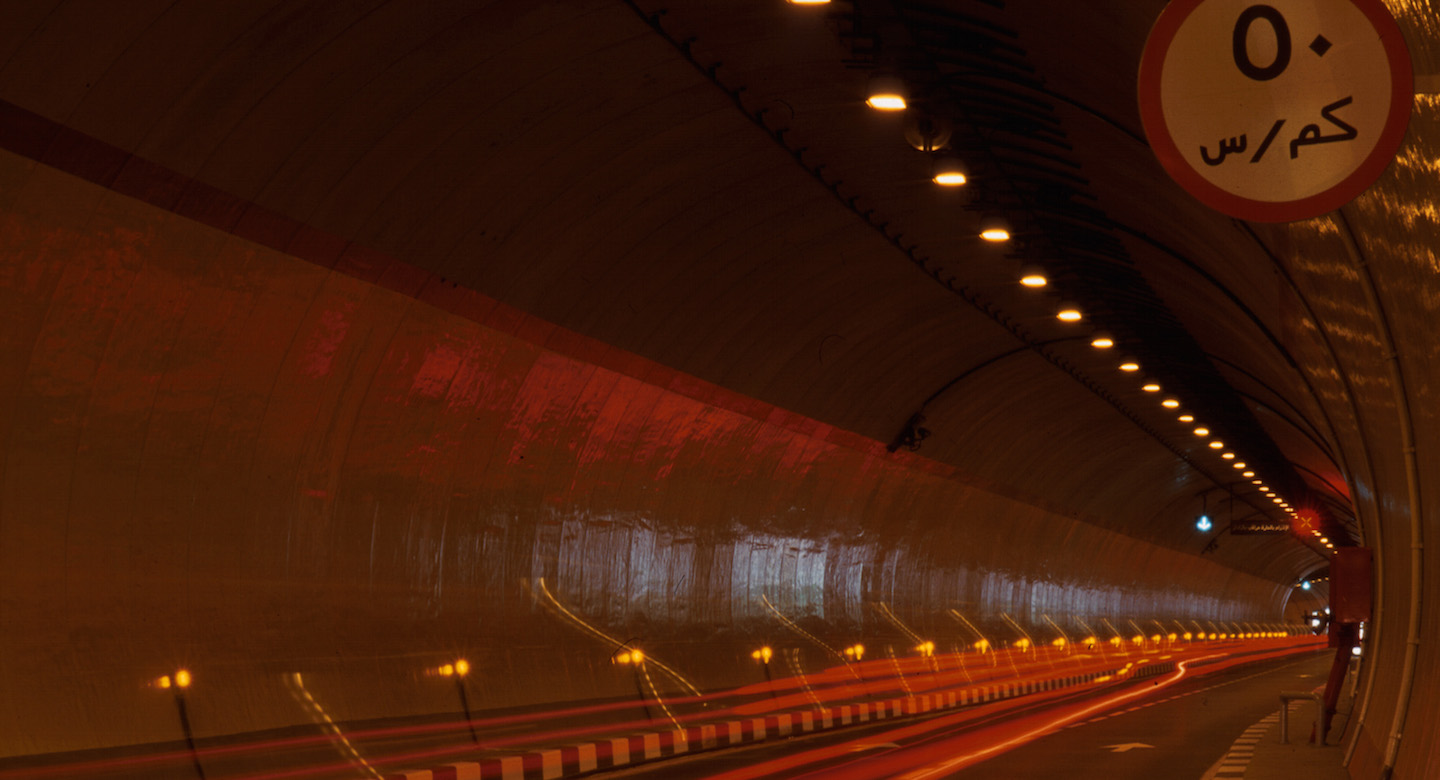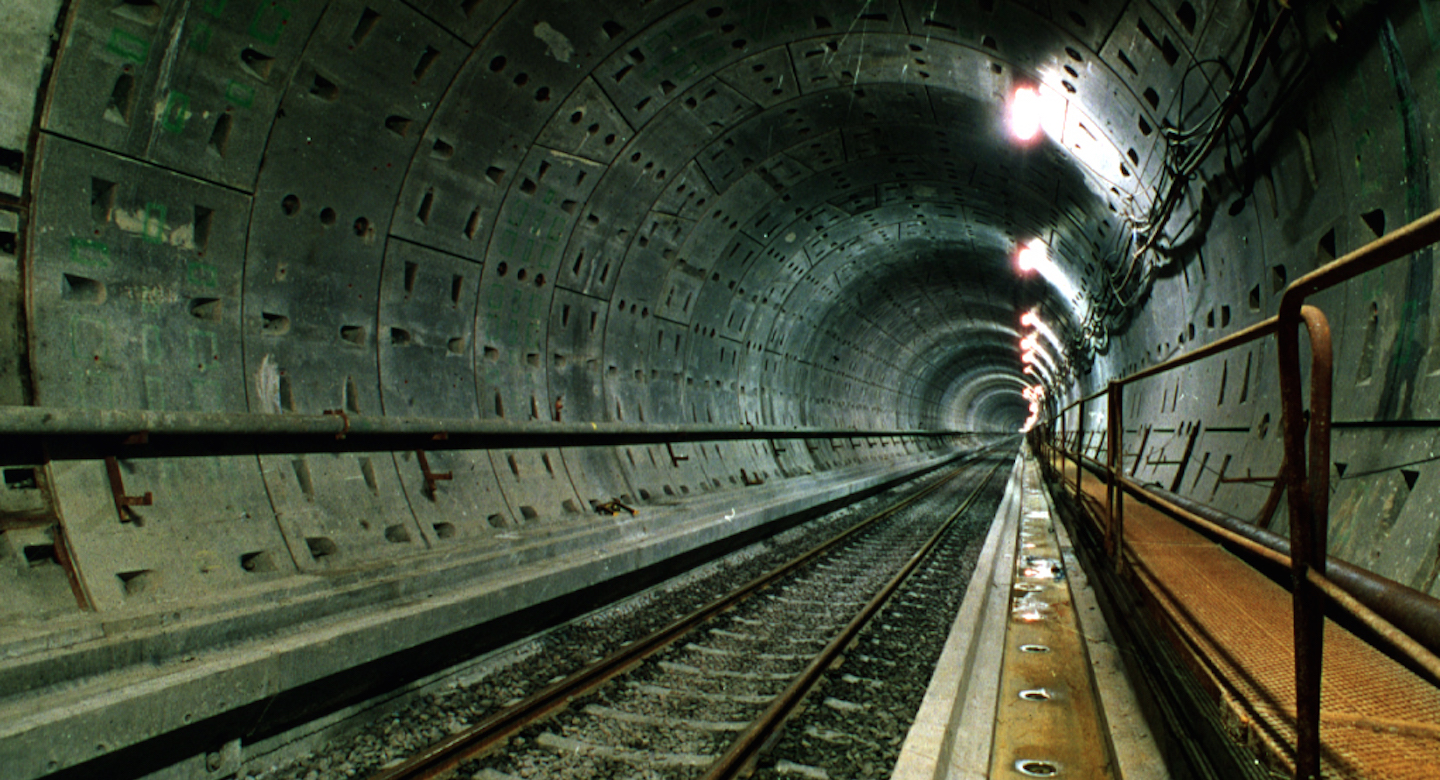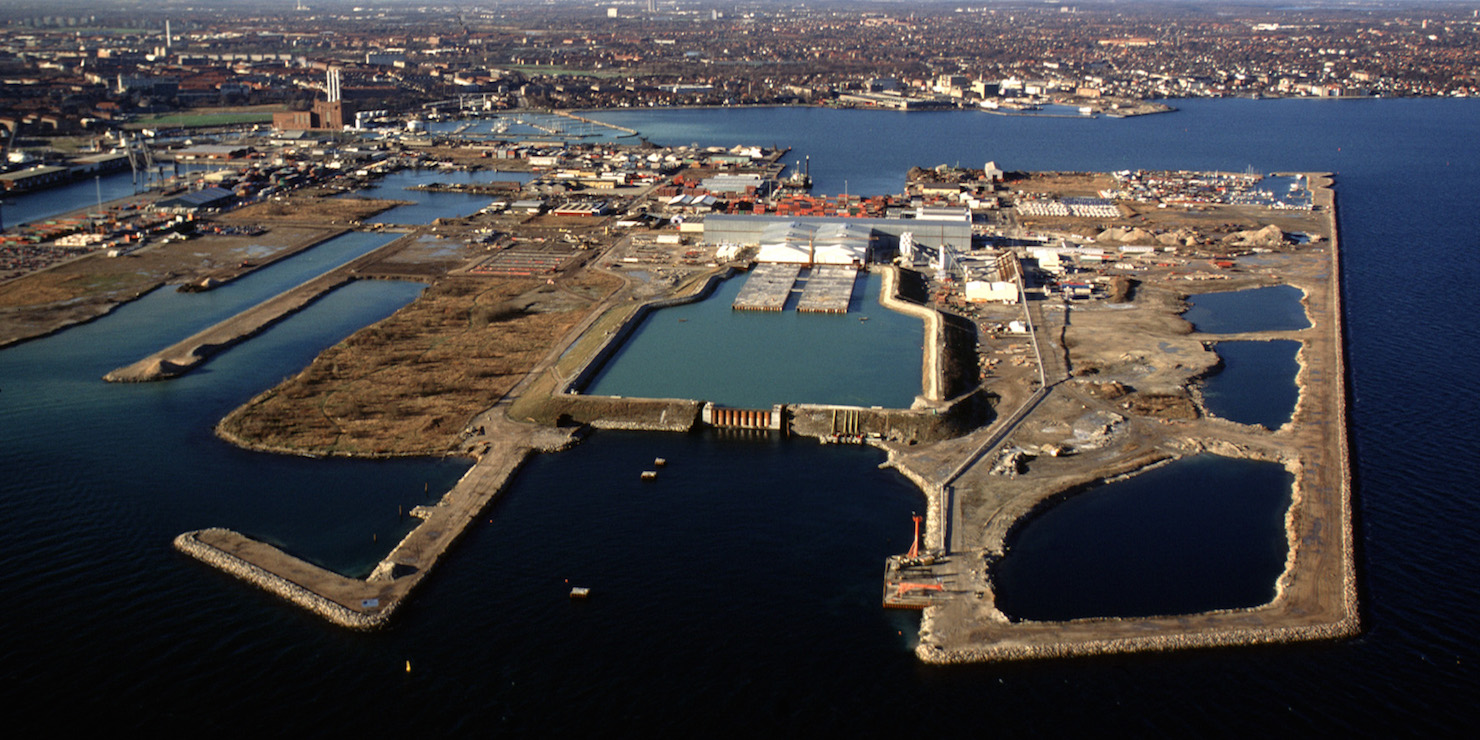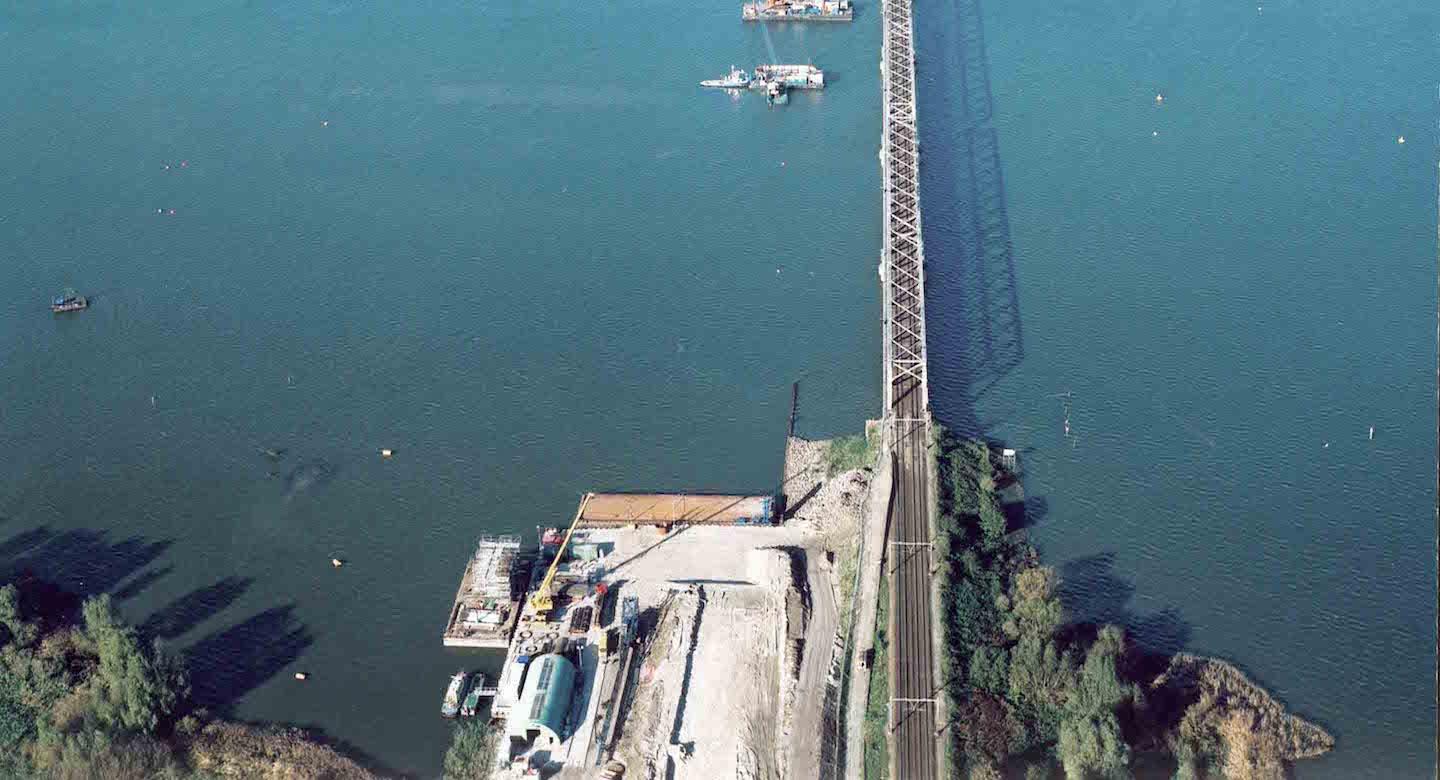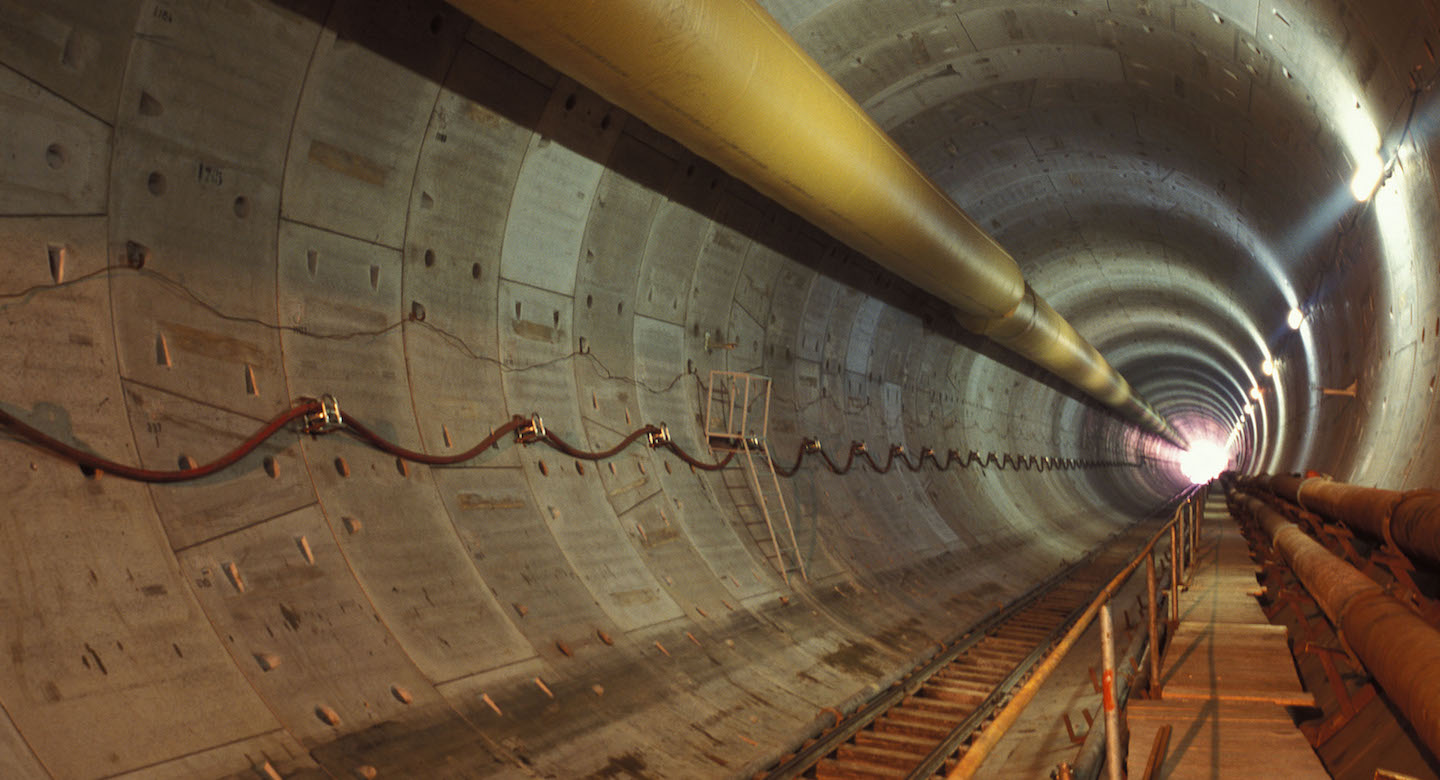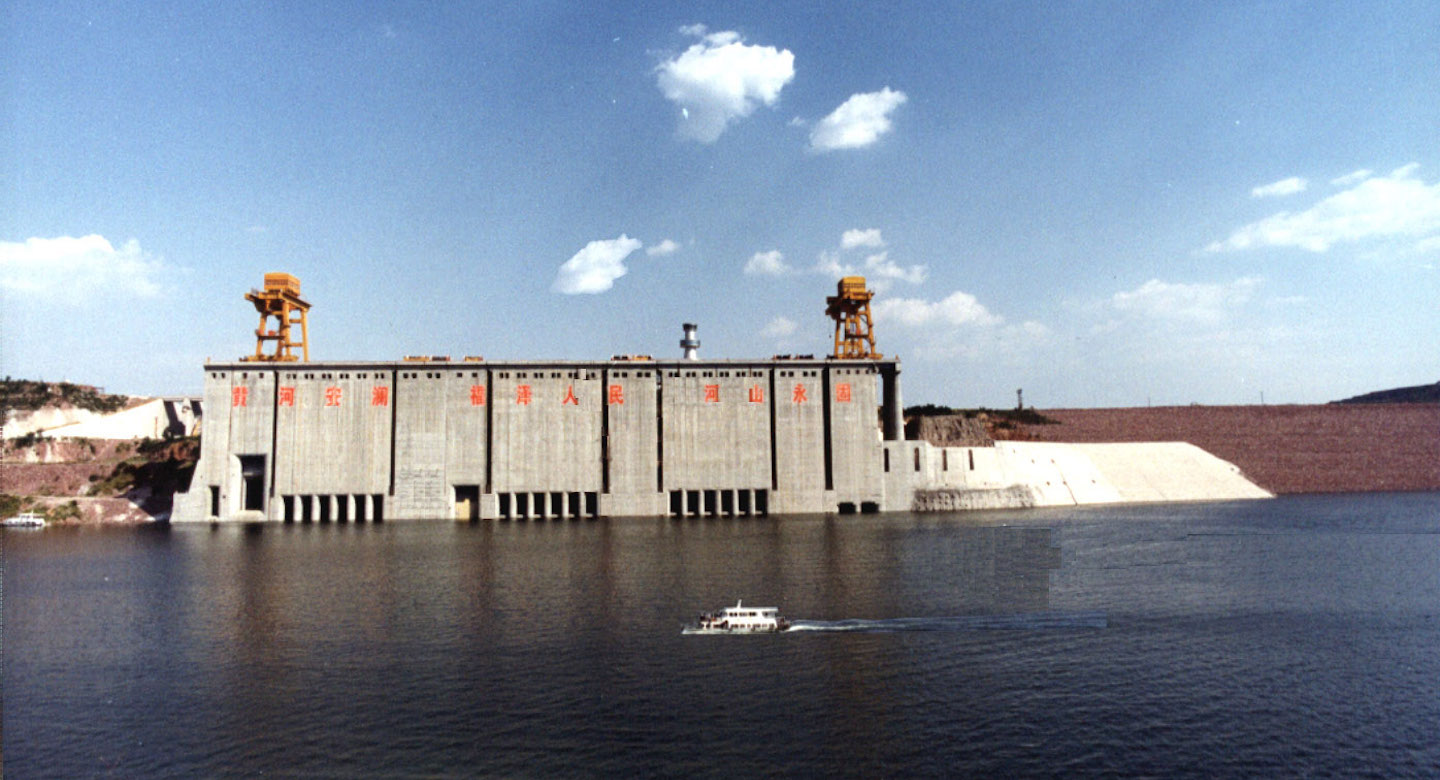A entre 1.500 y 1.900 metros de altitud, en la región del Libertador General Bernardo O’Higgins (Cordillera de los Andes), se encuentra el yacimiento de El Teniente, la mayor mina subterránea de cobre del mundo.
El proyecto para el que recibimos mandato por parte de Codelco incluía la excavación con explosivos de 2 túneles de 9 kilómetros cada uno, de 65 m² de sección media (uno para el transporte de los operarios y otra para el acarreo del mineral), así como la construcción de 2 galerías de acceso intermedias de 6 kilómetros en total. Estos túneles permiten crear un nuevo nivel en la mina de El Teniente, favoreciendo su explotación durante otros cincuenta años.
Following its participation since 1981 in the construction of the first metro line in Africa (in Cairo) and from 1993 to 1997 to a second metro line, VINCI Construction Grands Projets began work in June 1998 on the Al Azhar road tunnels. The project, located in the historic centre of Cairo, the old Fatimid city, and the Khan el Khalily district, provided a considerable technical and scheduling challenge. Work carried out for the National Authority for Tunnels included building two road tunnels, 2.6 and 2.8 kilometres long, respectively, trench junctions with existing roadways, and additional structures. The tunnels, which have a diameter of 8.4 metres, were excavated with a TBM. The worksite was particularly challenging given space restrictions, dense pedestrian and motorised traffic, the proximity of buildings, underground utility networks, and flyovers.
El diseño y construcción de los túneles ferroviarios del Storebælt es parte del proyecto de enlace fijo viario y ferroviario del Storebælt. Situados entre las islas de Selandia y de Sprogø (isla entre Fionia y la isla de Selandia), estos túneles se construyeron en el marco de realización de un enlace fijo entre Copenhague y el Continente.
El enlace del Gran Belt (enlace por carretera y ferrocarril entre las dos mayores islas de Dinamarca que son Selandia y Fionia), constituye el eje de transportes más importante del país. El proyecto incluye en su conjunto no menos de 18 kilómetros de obras de ingeniería. En este caso se nos encargó la construcción de dos de estos túneles (situados bajo el mar) de 7,4 kilómetros de longitud y un diámetro interno de 7,70 metros.
The Maliakos-Kleidi project on which VINCI Construction Grands Projets was mandated consisted in rehabilitating and developing a motorway. This infrastructure is 245 kilometres long: 205 kilometres of motorway were to be rehabilitated and 40 kilometres of new motorway (the focal point of the project) were to be built. The new section to be created as part of a design-build mandate also includes construction of 3 dual motorway tunnels (11 kilometres long in total) to prevent the above-ground crossing of the Tempi Valley, which is a tourism destination, two dual flyovers, and embankments featuring small structures and hydraulic works.
El puente-túnel de Øresund lleva del aeropuerto de Copenhague a la ciudad de Lernaken al sur de Malmö, e incluye sucesivamente: un túnel, una isla artificial, un viaducto, un puente atirantado y un segundo viaducto. El conjunto, de 16 kilómetros de longitud, permite el paso de una autopista y de una vía férrea, y fue objeto de 3 contratos principales. El primer contrato para la construcción del túnel, el segundo para las labores de dragado y el tercero para la ejecución del puente.
Se encomendó a VINCI Construction Grands Projets el diseño y construcción del túnel. El proyecto incluía, en concreto, la construcción de un túnel sumergido de 3.510 metros con una autopista de 2 carriles por sentido y una vía férrea de doble vía (lo que supuso entonces un récord mundial para este tipo de obras). El túnel está compuesto por pórticos y rampas de acceso en ambos extremos, edificios técnicos que albergan los sistemas de ventilación y las conexiones a las redes ferroviarias y de carreteras.
VINCI Construction Grands Projets was mandated by the ministry of transport, public works, and water management in the Netherlands to design and build a 16-kilometre section including a composite bridge (steel structure) spanning the Hollandsch Diep (1,190 metres long), two underwater tunnels crossing the Oude Maas and Dordtsche Kil (2,640 and 2,600 metres long, respectively), a 1,000-metre access viaduct, various engineering structures such as bridges and trenches, including the 935-metre Mokhoek open trench as well as 8.5 kilometres of railway infrastructure slabs resting on 27,000 driven piles.
This mandate is Lot Number 4 of the HSL project (fourth geographical sector out of a total of five for the high-speed line connecting Amsterdam to the border with Belgium).
In January 2006, the Entreprise Métro d’Alger entrusted the construction of Algiers’ first metro line to a consortium consisting of VINCI Construction Grands Projets, Siemens Transportation Systems and the Spanish company CAF. It was a contract for the turnkey delivery of a 9.5 km rapid transit line with a rolling stock of 14 trains for the Algerian capital. Our portion consisted of the finish and layout of 10 stations (nine underground and one overground), as well as the construction of a 16,000 m² service building and maintenance rooms.
VINCI Construction Grands Projets was responsible for the civil engineering works, architectural layout of the stations, electromechanical equipment, escalators as well as the Anassers control station and the Bach Djerah maintenance rooms.
Construction of this dual rail tunnel below the Pannerdensch Canal was part of the “Betuwe” project, a new rail line designed to convey merchandise between the port of Rotterdam and Holland’s border with Germany. This 160-kilometre line can accommodate container railway cars. The work package assigned to us called for the design and construction of the Pannerdensch tunnel, a 6.3-kilometre structure. The project included construction of a dual bored tunnel 1,620 metres long (8.5 metres in inner diameter), portals and access ramps over a distance of 1,200 metres, and 3.3 kilometres of railway platform made from backfill material. In addition, the Pannerdensch Canal tunnel possesses a special feature: it is equipped with gates (square cofferdams) at either end designed to prevent flooding.
The Xiaolangdi hydroelectric power station on the Yellow River, located 180 kilometres from Zhengzhou, 40 kilometres from Luoyang, and 600 kilometres from Beijing, marks the achievement of a longstanding aspiration, namely, to “tame” the Yellow River, the cradle and scourge of Chinese civilisation.
The structure consists of a sloping earth-core rockfill dam 154 metres high and 1,317 metres long at the crest, a water intake 112 metres high and 278 metres wide, and an underground power plant 252 metres long, 26 metres wide, and 61 metres high. From 1994 to 1999, Dumez-GTM took part in building this power plant as the lead contractor in the joint venture in charge of the project. The primary objective was to control sedimentation in the Yellow River to mitigate its destructive flooding. One of the defining characteristics of this structure, however, is that it meets a multiplicity of objectives, including power-generation and improved use of water for agriculture in the region.
We were commissioned by Eurotunnel to build three key turnkey tunnels with a total length of 150 kilometres. The tunnels, which run for 10 kilometres underground and 54 kilometres beneath the sea, include: 2 single-track rail tunnels and 1 service tunnel. Drilled to a depth of 25 to 45 metres below the seabed of the English Channel in a rocky layer of “blue chalk”, this underground rail link connects France to England.
